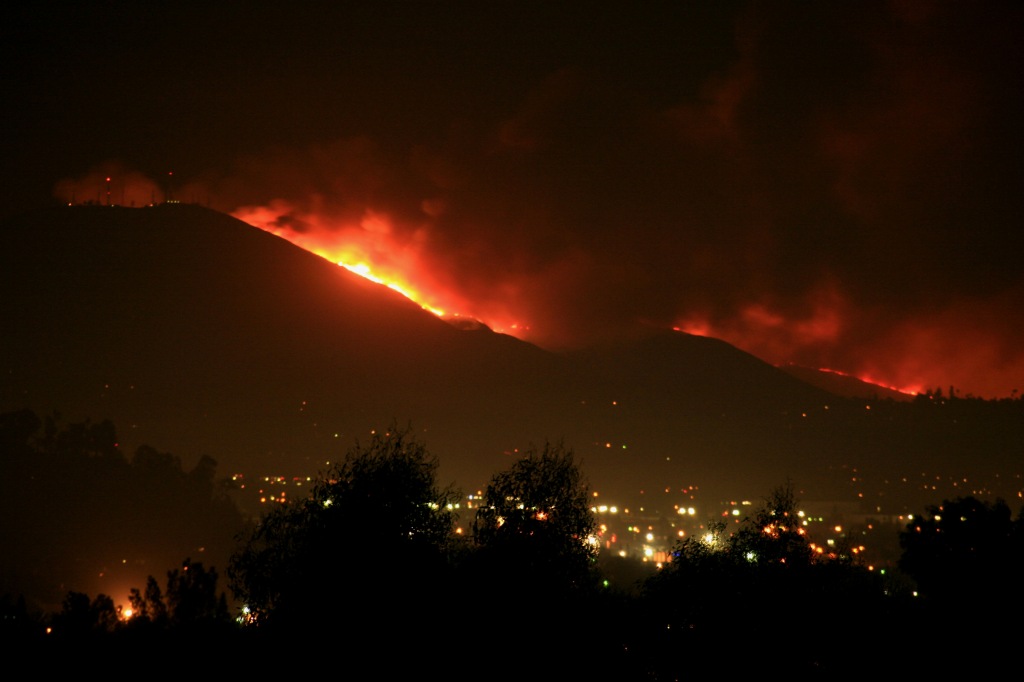Hundreds of natural catastrophes killed more than 10,000 people in 2018 and caused damage and losses amounting to $160 billion, according to re-insurer Munich Re.
The number and severity of these incidents should also prompt companies to thoroughly review their own business resilience, continuity and crisis management plans relative to natural disasters.
The highest single loss of life was caused by the September earthquake and tsunami in Indonesia, where 3,100 people died, while the incident with the biggest financial impact was the ‘Camp Fire’ wildfire in California, at $16.5bn, closely followed by Hurricane Michael, again in the US, which cost $16bn.
Half of the global losses were not insured, leaving businesses, farmers, householders and governments picking up the bill.
Munich Re says there are clear indications that man-made climate change has influenced wildfires in California and the high cost of the damage is partially as a result of high-value real estate developments near forests.

The Woolsey Fire in the Los Angeles celebrity residential area of Malibu destroyed 1,600 homes and mansions with damage amounting to $5.2bn. Fires in 2018 in California cost a total of $24bn, of which $18bn was insured.
In Europe – agriculture was hit hard with wildfires and drought, causing poor harvests, lack of animal feed for the coming winter, causing increased costs for farmers with its knock-on effect on food price trends. The overall cost was $3.2bn, with only a small proportion of the losses insured.
While Munich Re looks at increasing frequency, scale and costs of global ‘natcats’ – natural catastrophes – from an insurance and underwriting perspective, their reports and data are also very useful source material for risk management professionals in business and industry.
In addition to deciding on their level of insurance for natcats, companies must ensure natural risks feature in Enterprise Risk Management (ERM) programs and that their implications are thoroughly worked through. A systematic review of risks should include:
- Floods (especially operations in flood plains to or close to tidal areas, especially in places likely to suffer storm surges from hurricanes or tropical storms)
- Wildfires
- Hurricanes/cyclones/tropical storms
- Drought – especially in water stressed areas where a company’s use of water as an input to production could cause trouble with community access to drinking or agricultural water
- Other severe weather – eg snow, extreme cold
Companies should pressure-test their ability to maintain their operations in the face of any of the above that are relevant.
Employees and their families could themselves also become the company’s weakest link if their homes are damaged, cut-off or destroyed by a weather-related event. Staff traveling are also at directly risk from natcats– as illustrated by the grounding of 110,000 flights due to the 2010 eruption of the Eyjafjallajökull volcano. Having procedures that are well-understood by colleagues globally will contribute to both business continuity and the employer’s duty of care to staff.
A valuable method to test the company’s resilience is through scenario planning – using a natcat as the scenario for a crisis or resilience exercise on a corporate, country, business or location level.
In addition, it’s worth mapping how natcats could affect suppliers in countries and regions that are more exposed to these incidents. Suppliers can, and in many cases, must be involved in exercises. This is especially the case for those that are critical to the company’s operations and whose absence from the supply chain would seriously interrupt customer supply. Getting to know partner companies’ resilience levels and procedures will save time and contribute to a more agile, confident and effective company response.
Lines of communication should also be tested during exercises, with one or multiple methods of normal communications made inoperative in order that alternative comms channels (eg sat phones) can be established and be in place in case the company needs to respond for real.
CrisisManagement offers a world-class crisis management service to clients on resilience strategy, planning and tactics. We also undertake crisis readiness audits, as well as testing crisis plans with ‘as live’ scenarios delivered through bespoke workshops by crisis management professionals.
Our team comprises highly experienced consultants with backgrounds in corporate resilience, ERM programs, policing and the military. We have led teams that have undertaken contingency and business continuity planning, as well as crisis response to natural and man-made catastrophes, including the Japanese tsunami and nuclear disasters, floods, hurricanes, terrorist attacks and the Arab Spring movement. More information from adam.roscoe@crisismanagement.ch.
Photo credits: Heading Photo by Kevin: Mt. San Miguel. San Diego wildfire as seen looking south from Santee. Original can be viewed here
Satellite photo by Stuart Rankin: Edited Landsat 8 image of the Camp Fire on 9 November 2018, in Northern California. The city of Paradise is in the middle of the flames. Original can be viewed here
Both photos published under Creative Commons licence


Leave a comment